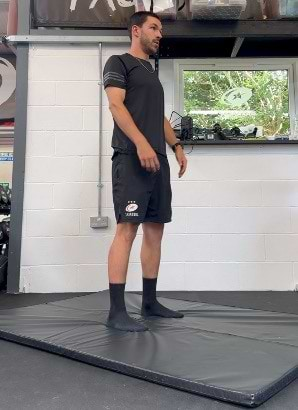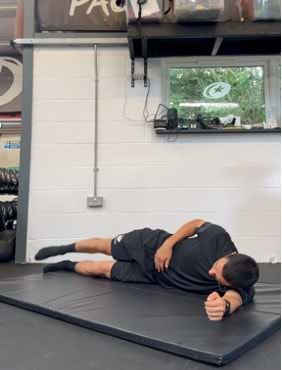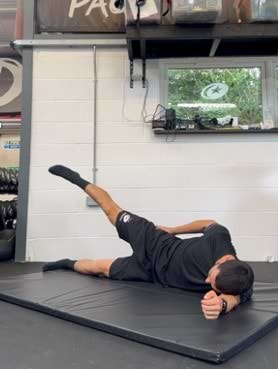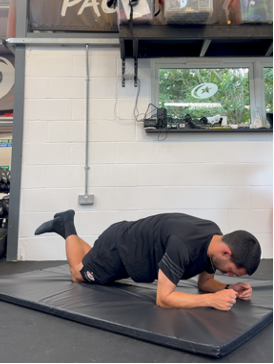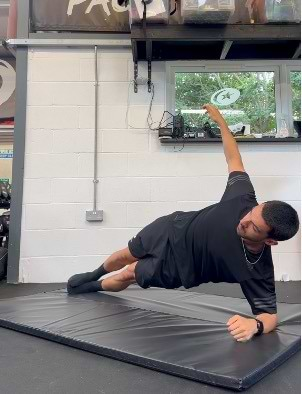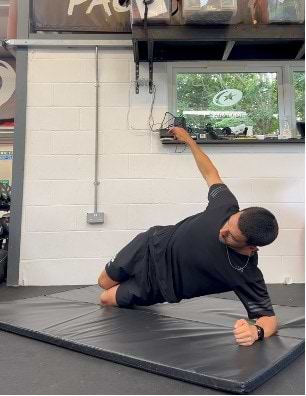Sports physiotherapist Joel Teiger shares his top 10 exercises for improving core muscle strength and enhancing on-bike flexibility.
Cycling as a sport can be categorised in so many ways. Whether you’re a regular at your local cafe ride, competing in ultra-endurance challenges or racing, there is a place for strength training in everyone’s routine. The words strength training can often be intimidating to many. This typically leads people to the misapprehension that you're always required to have an active gym membership or some form of training history and knowledge to complete it effectively.
This guide is only intended as a guide to the many forms of strength training that can be completed from the comfort of your home or in a gym. Whichever you choose is totally down to your personal preference. At the end of the day, something is better than nothing, so let’s get your body moving and make riding your bike more enjoyable.
The importance of strength training
Injury prevention
Injuries on the bike can be really frustrating and often confusing to manage. As a Physiotherapist, I find the best treatment is prevention. Broadly speaking, the stronger you are, the more resilient your body is to injury and overuse. Many factors can contribute to injury, such as load management, joint mobility, and body mechanics. However, combining strength and mobility training can often be an excellent place to start the process of bulletproofing your body.
Performance
Muscle strength is directly proportional to force production. You can build up a solid base by giving your body the foundation of being strong and having a respective degree of muscle bulk. Whether you’re trying to build endurance, out-and-out power or the ability to hold stronger efforts for longer, strength training will help you achieve all of these goals.
Efficiency and comfort
Cycling requires maintaining static positions within our upper body for long periods. While everyone will understand the importance of having strength in our legs to produce the force we need to pedal, it is also essential to consider what your trunk and hips are doing. By creating a stable base within your core and hips, you can better transfer your power into the pedals, making you a far more efficient cyclist. Efficiency also comes with the benefit of improving comfort and reducing your chances of overuse injuries.
Strength training guidance
Please note, all the exercises below are being completed by a medical professional. If you have a current injury or pre-existing medical condition please consult an appropriate medical professional for guidance prior to completing the exercises below
Home Exercises
1. Squat (3 x 10 repetitions)
Starting with your legs shoulders width apart, squat down ensuring heels stay in contact with the ground. Lower over 3 seconds.
Progressions:
- Add a weight in a goblet squat position as seen in picture
- Add a two second hold at the bottom of the movement.
2. Lunge (3 x 12 reps each side)
Starting in position 1, lower your back knee towards the floor to a count of 3 then lift back up into the starting position. If struggling with this, add a block or pad under the back knee to reduce the amount of movement required.
Progressions:
- Add weight to the opposite hand (This will also challenge your core stability)
- Add a 2 second hold at the bottom of the movement.
3. Step Up (3 x 10 reps each side)
Using a small step, step up and then slowly lower yourself down. Have an emphasis on the slow lowering for maximal adaptation.
**Progressions: **
- Add weight using 2x dumbbells or a weighted backpack.
- Increase the height of the step.
4. Side Lying Leg Raise (3 x 15 reps each side)
Lie on your side, keeping your pelvis in a neutral position. Lift your leg up towards the ceiling. Prompt: feel like you’re trying to reach your leg away to avoid hitching your hip up.
5. Elevated Glute Bridge (3 x 12 reps)
Lying on your back with your knees bent and heels planted. Push through your feet to lift your hips. The target is to have your hips lifted so your knees, hips and shoulders are all in a straight line. Slowly lower back to your starting position.
**Progressions: **
- Lift up on both legs, lower on a single leg.
- Complete both up and down on a single leg.
- Add weight to the single leg glute bridge.
Core/Balance Extras
Guidance
6. Deadbug leg lower
Lying on your back with your arms above your head and your legs bent up to 90°, lower one leg at a time and raise back up to the starting position.
Progression:
- Lower your opposite arm at the same time.
- Hold light weights in your hands.
7. Plank
Lying on your front, lift your body up onto your elbows. If this is too difficult you can lower your weight onto your knees.
8. Side Plank
Replicate the picture seen to the right. Ensure your hips are not dropping or rolling forward. If too difficult, lower down onto your knees to complete the exercise.
9. Superman
On all 4’s start by lifting one leg directly backwards ensuring your hips stay balanced. Lower back down to the starting position then lift the other leg and repeat.
Progression: Lift the opposite arm at the same time and slow down the movement.
10. Single leg clock reach
Standing on a single leg, using your non-standing leg, reach forward to 12 o’clock, side to 3 o’clock, other side to 9 o’clock and backwards to 6 o’clock. Try not to put your non-standing foot down.
Conclusion
Incorporating these strength exercises into your routine can significantly benefit your cycling performance, reduce your injury risk and enhance your overall well-being. Initially strength training is recommended to be completed two days per week. There is no issue with this being once per week and then building up to two days per week as seen fit. The optimal time to fit this into your day is when you are fresh prior to your cycling. It is important to consider that you will be fatigued following this so take this into consideration when planning your cycling.
DOMS: Delayed onset muscle soreness. It is important to consider that following strength training you will often have an element of muscle soreness. This is nothing to worry about and is a sign that your strength training is effective in creating the wanted adaptations within your muscles. It’s important to consider your nutrition and eat adequate protein to recover. This soreness is usually worse after 48 hours and can last as long as 7 days if you are not used to strength training. Please contact a medical professional if you have any concerns regarding Injury or ongoing discomfort.
